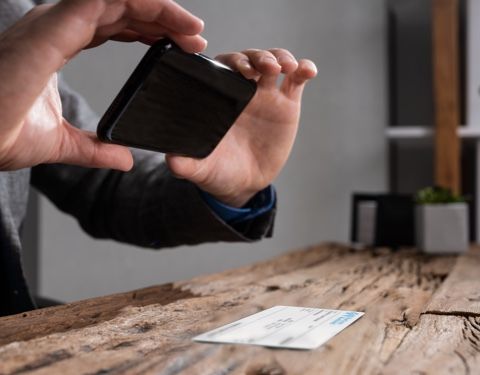
Insurance
Bunion repair is a necessary surgical procedure.
Bunions are a medical problem, not a cosmetic one – even though the Bunionplasty® 360 Bunion Repair™ procedure is performed through tiny incisions like the ones used in laparoscopy or plastic surgery. In many cases, private health insurance companies and Medicare consider bunion surgery medically necessary, so find the doctor who’s right for you, and work with them and your insurance provider to determine your coverage.

Work with your provider
Your doctor’s staff is ready to help.
Once you’ve identified the surgeon you want to perform your Bunionplasty® procedure, their office will determine how your insurance provider covers bunion surgery. Keep reading for more insight on medical necessity.

About Medical Necessity
When bunions are a medical problem.
At first, mild bunions may not be painful or interfere with daily life. But because bunions may worsen over time, even with preventive measures, surgery may be necessary. Surgical bunion correction is typically appropriate when any of these are true:
- Simple home remedies don’t help, like modifying activities or wearing supportive shoes
- Doctor-prescribed physical therapy, custom inserts, injections, and/or other treatments aren’t effective
- You are unable to wear certain footwear
- The bunion(s) interfere with activities of daily living
- A worsening of the bunions cause new foot problems, like arthritis, hammertoes, or pain in the ball of the foot
Of course, bunions affect people differently, and coverage may vary among health insurance providers.
Bunions: The who, why, and what next.
Experts have estimated that nearly 25% of adults aged 18-65 have bunions – and by age 65, more than 35% of adults will have a bunion in one or both feet. Based on this estimate, hundreds of millions of people worldwide are likely to develop bunions at some point.
Bunions are a medical deformity of the foot, and anyone can get them. However, they’re more commonly diagnosed in women, older adults, and people who have a family history of bunions. Additional risk factors can include wearing tight or poorly fitted, injuries to the foot, and other medical conditions like arthritis.
While bunions are more common in women, men can get bunions too! Regardless of gender, the root causes of bunions are similar: genetics, poorly fitted footwear, and other conditions like flat feet or osteoarthritis. Just like high heels are a common risk factor for women, tight or pointed-toe shoes can put men at greater risk for developing bunions.
Bunions are more commonly diagnosed in adults, but teens can get bunions too. A teen might be more likely to get a bunion if a family member has them, if they wear high heels or tight shoes, or if they have other biomechanical foot problems. Just like with adults, girls are more likely than boys to develop “adolescent bunions.”
If bunion pain is having an impact on your daily life, you may be a candidate for the minimally invasive Bunionplasty® 360 Bunion Repair™ procedure. Bunions are a comprehensive multidimensional medical problem, and the Bunionplasty® procedure was designed for all aspects of your life and lifestyle. So learn more and then Find a Doctor near you.

Find a doctor and take the next step.
Life is too short to suffer from bunion pain. Find a doctor today, get your bunion surgery questions answered, and get back on your feet again.







